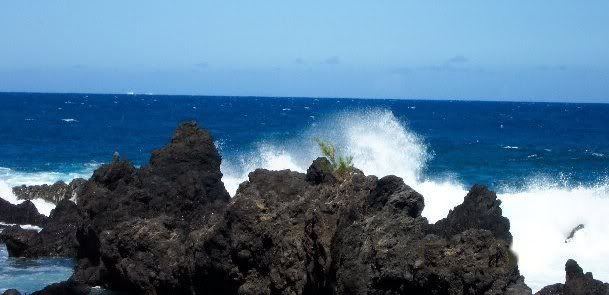April 26, 2004
Ka Lama, "The Light " Appears in Hawaii"
This is the first of a series of articles written for radio broadcast by the Hawaiian Historical Society. I thought that you'd enjoy reading some of them
Ka Lama, "The Light," Appears in Hawaii
By Helen G. Chapin
In the 1820s, Protestant missionaries brought with them the technology for the American-style newspaper when they transported a printing press 18,000 miles around Cape Horn. The Islands' first periodical appeared in 1834, in what was the first newspaper building west of the Rocky Mountains, at Lahainaluna School on Maui. A former Kentucky compositer and pressman, missionary Rev. Lorrin Andrews, taught male Hawaiian students how to gather information, write it up, and print it.
Ka Lama, "the Light" or "the Hawaiian Luminary," was printed in Hawaiian on a manually operated flatbed press that could turn out 100 sheets an hour. Content included articles on constitutional government and Christian teachings, along with illustrations of exotic animals like the lion, elephant, and zebra. We are told that when an issue appeared, students immediately eagerly read it through.
Ka Lama was part of the Protestant groups almost immediate rise to power and influence. Mission editors joined the Hawaiian government. A modernized newspaper technology was a revolutionary force in bringing the outside world to Hawaii and cementing American expansion and dominance. Ka Lama initiated the popular press and was the forerunner of some 1,000 separately titled newspapers in a dozen different languages that have appeared to the present. It introduced what became the principal way to transmit information until the advent of television.
Copyright © 1994 The Hawaiian Historical Society. All rights reserved.
Understand that Hawaii had first contact with English in 1779, then the first missionaries arrived in 1819-1820 and began the work of translation of the Hawaiian language. Hawaiian was up until that time an un-written language that relied soely on verbal translation of ideas. There are "mele" and "o'oli" chants that can take days to recite that tell of lineage, long journies by voyaging canoe, and the histories of the people of polynesia.
The Hawaiian Bible was completed in 1839. The translator's work was so well done that Wycliffe Bible Translators, the premiere ligustics specialists with regards to translation of new indigenous languages, uses many of the same methods today and Hawaiian is used as a model text to train translators.
More literature has been produced in Hawaiian than all other indigenous languages in the US combined. Currently the University of Hawaii at Hilo has the only Hawaiian language studies Department in the nation and is the only place where you can get a PhD in an indigenous language course. This was how it all began....
